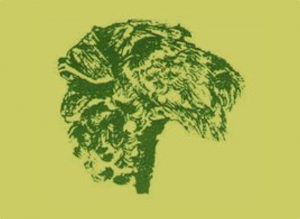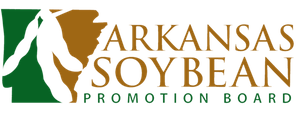Ivan Midbust Heger – 2017 Arkansas Soybean Science Challenge Award Winner Northwest Arkansas Regional Science & Engineering Fair
 Ivan Midbust Heger, 17, a senior at Alma High School won the Soybean Science Challenge at the 2017 Northwest Arkansas Regional Science & Engineering Fair at the University of Arkansas-Fayetteville on March 3.
Ivan Midbust Heger, 17, a senior at Alma High School won the Soybean Science Challenge at the 2017 Northwest Arkansas Regional Science & Engineering Fair at the University of Arkansas-Fayetteville on March 3.
Heger received a $300 cash award provided by the Arkansas Soybean Promotion Board at the Awards Ceremony and also won Honorable Mention in the Engineering: Electrical and Mechanical category. The title of his project was “Crop Dusting Attachment for Drones.” His project progressed to the Arkansas State Science Fair to be held on Friday, March 31 where it will be judged for a Soybean Science Challenge award at the state level.
Jeana Parker, Heger’s science teacher, also won the Soybean Science Challenge Teacher Mentor Award. “I decided to have Ivan participate in the Soybean Science Challenge because of the application his project has for soybean farmers,” said Parker. “Farmers spend a lot of money on crop dusting and making a prototype that a farmer could potentially use would save time and money when spraying their crops.” Parker thought Heger’s project was applicable not only to just soybeans, but also all other row crops and even small garden type farms.
Parker was honored to receive the Teacher Mentor Award. “Ivan has gained so much from participating in this challenge that it has encouraged me as a teacher to help mentor future students into developing a project that allows them to participate in The Challenge next year,” said Parker.
Heger was very proud and happy to have won The Challenge and was very “thankful for this opportunity as it has provided me with very interesting knowledge about soybeans.”
The part of the Soybean Science Challenge online course which was most intriguing to Heger was the section on nematodes and the damage they do to soybean plants. He also enjoyed learning about the various uses for soybeans as well as their importance to Arkansas.
Heger said before participating in the Soybean Science Challenge, that he had little knowledge about soybeans other than they were the most important crop in Arkansas and that soybeans could be used as a substitution for meat.
“Ivan gained so much knowledge about soybeans and how farmers could benefit from his prototype,” Parker said. After Parker talked with Heger about his project, he realized the potential his prototype had for spraying small areas within the row crop that are hard to access by spray buggy. Farmers could just fly the drone over the area needing to be sprayed and isolate just that one area.
Parker said Ivan did an amazing job researching and building his prototype. “He was able to use the skills learned in our PLTW Intro to Engineering course by utilizing Autodesk Inventor to make a 3D module of his prototype.”
Parker actually knew quite a bit about Arkansas soybeans. “My father is a row crop farmer in the Kibler/Mulberry bottoms, so I have been around soybeans my whole life. We were even Crawford County farm family of the year when I was younger.” As soon as Parker won the Teacher Mentor Award, she went straight to her dad to show him all the soy products that were in the prize bag. Parker said her father kept most of it for use on the farm.
Heger’s mother, Christina Heger, was “thrilled and very proud of Ivan and grateful for the opportunity for him to grow and learn from the experience.” She was also glad to see that his hard work was rewarded.
“Ivan has been interested in science since he was very young. When other children would spend most of their computer time on video games, he would be watching videos on science,” said his mother. “Over dinner he would often spout out some scientific fact that he thought was interesting, which then led him to research the topic.”
Heger has always excelled in math and science subjects. He attended several school systems and lived both in Spain and now in the United States. When in Spain he attended Spanish schools, an international bilingual school and a British school which has provided him with an intercultural background. His interest in science and math has remained constant according to his mother.
Heger’s most important conclusion after finishing his project was that crop dusting with drones can become a viable, economic and environmentally friendly option for farmers. Heger plans to improve his design for the crop dusting drone model, create a higher quality prototype and hopefully gain access to a drone with which he can test his prototype.
“The Soybean Science Challenge allows Arkansas senior-high students to participate in scientific discovery that can make a difference to our state and the world. Soybean farmers help feed the world, and Soybean Science Challenge students not only learn about this important commodity crop, they also develop an understanding of the challenges and complexity of modern farming,” said Dr. Karen Ballard, Extension developer and director of the program.
“The goal of the Arkansas Soybean Science Challenge is to engage students in “real world” education to support soybean production and agricultural sustainability,” said Gary Sitzer, chairman of the Arkansas Soybean Promotion Board. “The program also rewards scientific inquiry and discovery that supports the Arkansas soybean industry.”
The Arkansas Soybean Science Challenge was launched in January 2014 for 9-12 grade science students. Students who successfully completed the online course were eligible to have their original soybean-related research projects judged at the 2017 ISEF affiliated Arkansas science and engineering fairs.
Information on the 2017-18 Arkansas Soybean Science Challenge will be available in summer 2017. For more information, contact Dr. Karen Ballard at kballard@uaex.edu.
The Cooperative Extension Service is part of the University of Arkansas System Division of Agriculture.
Ivan Midbust Heger – Alma High School – Teacher, Jeana Parker
Category: Engineering: Electrical and Mechanical
Project Title: Crop Dusting Attachment for Drones
Abstract:
The purpose of this project was to design and prototype a module that could be used in conjunction with a drone to apply fertilizer or pesticides to crops. The researcher firstly designed various models and then decided on a model that was comprised of a pressurized liquid container, a U shaped tube, a T-connector, two tubes and four nozzle sprayers. The researcher then prototyped the model. This prototype used parts that were cheaper than those intended and thus not as effective but the prototype was still close enough to the design to be representative of it. The prototype was able to create a large spray that could effectively cover plants but it did contain some overlap with the various nozzles. The prototype also had components that would reduce the effectiveness in real world scenarios like a manual pressure pump instead of a valve or a manual valve instead of a solenoid valve. These differences were made as cost saving measures for a prototype and were fine for testing but would not be acceptable on a final product. The prototype, however, showed that the design was viable but a second, more effective, prototype should be built in order to test the design and see areas of the design that require improvement that could otherwise be attributed to cheaper parts.
